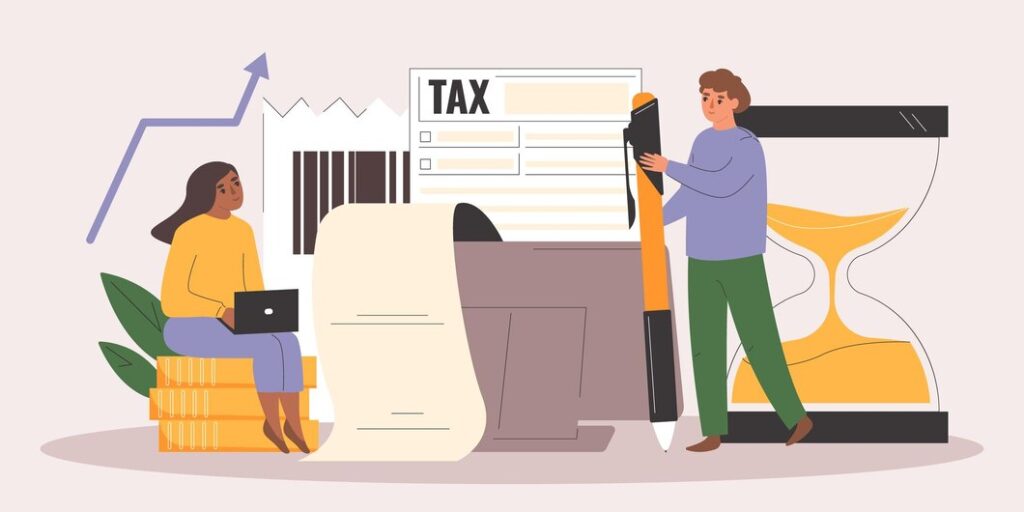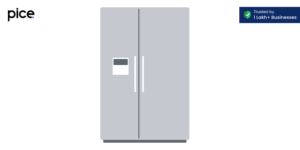Composition Dealer in GST
- 20 Sep 24
- 16 mins

Composition Dealer in GST
Key Takeaway
- The GST Composition Scheme simplifies tax compliance for SMEs by allowing them to pay a fixed rate on turnover.
- Composition dealers enjoy reduced compliance burdens, including quarterly rather than monthly return filings.
- Eligibility for the scheme is primarily based on annual turnover, with specific restrictions such as no interstate sales.
- Composition dealers cannot claim input tax credit, emphasizing the scheme’s simplicity over flexibility.
- The scheme restricts dealers from collecting GST from customers, making GST a cost to the business, not a pass-through.
Understanding the GST Composition Scheme
The GST (Goods and Services Tax) Composition Scheme is a tax simplification initiative designed for small and medium-sized enterprises (SMEs) in India. This scheme allows eligible businesses to pay GST at a fixed rate of their turnover, which is significantly lower than the regular rate of tax under the GST regime. The primary objective of the Composition Scheme is to reduce the compliance burden on taxable person and simplify the tax filing process.
Under the Composition Scheme, businesses are relieved from the painstaking task of maintaining detailed records and filing multiple monthly tax returns. Instead, they are required to file returns quarterly, which simplifies the operational aspects of tax compliance. The scheme is voluntary, and taxable person can choose to opt-in or opt-out based on their eligibility and business requirements.
The eligibility for the Composition Scheme is determined by the annual turnover of the business. This threshold varies, so it's important for businesses to stay updated with the latest regulations. Once registered under this scheme, businesses are not allowed to claim input tax credit (ITC), as the scheme offers a simplified tax rate which is essentially a tax on the turnover without the mechanism of tax credit on purchases.
Regulations Surrounding the GST Composition Scheme

The GST Composition Scheme is governed by specific rules and regulations that outline the eligibility criteria, tax rates, compliance requirements, and limitations for businesses opting for this scheme. Key regulations include:
- Eligibility Criteria: Businesses with an annual turnover below a specified threshold can opt for the Composition Scheme. This threshold is periodically revised by the GST council, so it’s crucial for businesses to ensure they meet the current criteria.
- Tax Rates: The GST rates under the Composition Scheme are significantly lower than the regular rates. As of the latest guidelines, manufacturers and traders pay a percentage of their annual turnover as tax, while service providers have a different rate. These rates are designed to ease the tax burden on SMEs.
- Compliance Requirements: Composition dealers are required to file quarterly returns using Form GSTR-4 and an annual return using Form GSTR-9A. This is a significant reduction in compliance work compared to regular taxpayers who must file monthly returns.
- Restrictions: There are several restrictions under the Composition Scheme. Dealers cannot undertake inter-state transaction, supply GST-exempt goods, or supply through e-commerce operators who are required to collect tax at source. Additionally, they are not allowed to claim input tax credit.
- Billing Requirements: Composition dealers are required to issue a bill of supply instead of a tax invoice and must mention that they are under the Composition Scheme. They cannot collect any tax from the purchaser or show tax amount on their sales invoice.
These regulations are designed to ensure that the Composition Scheme remains a viable and beneficial option for small businesses, helping them to focus on their operations rather than being overwhelmed by complex tax compliance requirements.
Defining a Composite Dealer in the Context of GST
A Composite Dealer in the context of GST refers to a taxpayer who opts to pay tax under the Composition Scheme. This choice is available to small and medium-sized businesses that meet specific criteria, primarily revolving around their annual turnover. The scheme is designed for businesses looking to simplify their GST obligations by paying a fixed percentage of their turnover as GST, which is considerably lower than the normal rates.
The categorization as a Composite Dealer is not automatic and requires eligible businesses to opt-in through a formal registration process under the Composition Scheme. Once registered, these dealers are subject to a different set of rules and regulations compared to regular GST taxpayers. Key characteristics defining a Composite Dealer include limited operational scope (e.g., restrictions on interstate sales and e-commerce operators), the inability to claim Input Tax Credit (ITC), and adherence to simplified tax filing and payment procedures.
Advantages Offered to Composition Dealers through the GST Composition Scheme
The Composition Scheme under GST offers several advantages to Composite Dealers, making it an attractive option for eligible businesses. These benefits are designed to reduce the administrative burden and compliance costs associated with the GST, particularly for small businesses. Here are some of the key advantages:

- Simplified Compliance: One of the most significant benefits is the simplification of GST compliance procedures. Composite Dealers are required to file GST returns quarterly, as opposed to monthly submissions by regular taxpayers. This reduces the administrative workload and simplifies the tax compliance process.
- Reduced Tax Liability: The scheme allows Composite Dealers to pay GST at a nominal rate of their turnover, which is lower than the standard GST rates. This can significantly reduce the overall tax liability for small businesses, enhancing their financial viability and operational efficiency.
- Lesser Record-Keeping Requirements: Since the scheme does not allow dealers to claim Input Tax Credit, the need for maintaining detailed transaction records for tax purposes is substantially reduced. This simplification of record-keeping requirements further lowers the operational costs for small businesses.
- Ease of Doing Business: By reducing the complexity and frequency of tax compliance, the Composition Scheme allows business owners to focus more on their core business activities rather than getting entangled in the intricacies of tax regulations.
- Increased Competitiveness: The reduced tax burden can lead to lower prices for goods and services offered by Composite Dealers, potentially making them more competitive in the market, especially when catering to price-sensitive segments.
- Transparency and Reduced Tax Evasion: The scheme encourages small businesses to register under GST, which brings more entities into the tax net, increasing transparency and reducing tax evasion.
The Composition Scheme and the role of Composite Dealers in GST represent a thoughtful approach by the government to ease the tax burden on small businesses, fostering a more conducive environment for their growth and sustainability in the competitive market.
Guidelines for GST Payment by Composition Dealers

For Composition Dealers under the GST framework, specific guidelines have been established to streamline the process of GST payment, making it more manageable and less cumbersome. Here’s a breakdown of these guidelines:
- Quarterly GST Payments: Unlike regular taxpayers who are required to make monthly GST payments, Composition Dealers are obligated to pay GST on a quarterly basis. This aligns with their quarterly return filing, easing the cash flow management for small businesses.
- Fixed Rate of Taxation: The rate at which GST is paid by Composition Dealers is predetermined and is a fixed percentage of their turnover. This rate varies for manufacturers, traders, and service providers but remains significantly lower than the standard GST rates, reducing the tax burden on these businesses.
- No Input Tax Credit: Composition Dealers are not eligible to claim Input Tax Credit (ITC) on their purchases. Consequently, the GST paid on their inputs cannot be deducted from their tax liability, simplifying the payment process but also impacting the cost structure of their goods and services.
- Payment Along with Returns: The GST payment must be accompanied by the quarterly return filing. Composition Dealers must fill out Form GSTR-4 every quarter, summarizing their turnover and the corresponding GST payment.
- No Tax Collection from Customers: Dealers under the Composition Scheme are prohibited from collecting any GST from their customers. This necessitates that the GST payment is made out of their pocket, essentially becoming a cost to the business.
- Advance Tax Payment for Supply under Reverse Charge: If a Composition Dealer receives supplies from an unregistered dealer or services on which tax is payable on reverse charge basis, they are required to pay GST in advance at the time of such procurement.
💡If you want to pay your GST with Credit Card, then download Pice Business Payment App. Pice is the one stop app for all paying all your business expenses.
Constraints Imposed on Composition Dealers within GST
While the Composition Scheme under GST offers numerous advantages, it also imposes several constraints on Composition Dealers, designed to limit the scope of the scheme to its intended beneficiaries and prevent its misuse:
| Constraint | Description |
|---|---|
| Turnover Limit | Eligibility is restricted to businesses whose turnover does not exceed a specific threshold, subject to periodic review. |
| No Interstate Sales | Composition Dealers are prohibited from making interstate supplies of goods. |
| Restriction on Supply of Non-GST Goods | Dealers cannot supply goods that are exempt from GST, such as alcohol for human consumption and petroleum products. |
| E-commerce Sales Prohibition | Dealers opting for the Composition Scheme are generally not allowed to sell goods through e-commerce platforms that collect tax at source. |
| Mandatory Bill of Supply | Instead of a tax invoice, a bill of supply must be issued for sales, which cannot include GST charged to customers. |
| Limited to Specific Business Activities | Certain service providers and manufacturers of specific goods may be ineligible for the Composition Scheme based on GST Council restrictions. |
These constraints delineate the operational boundaries within which Composition Dealers must operate under the GST regime.
Determining the GST Rate for Composition Dealers
The GST rate for Composition Dealers is a predetermined percentage of their turnover, significantly lower than the standard GST rates applicable to regular taxpayers. This rate varies depending on the type of business. For instance, manufacturers and traders of goods may pay a different rate compared to service providers. The rationale behind offering a reduced rate is to alleviate the tax burden on small and medium enterprises (SMEs) and simplify the tax compliance process. The specific rates are outlined by the GST Council and are subject to change based on policy revisions. It's important for businesses to stay updated with these rates to ensure compliance and optimize their tax liabilities. The reduced rates under the Composition Scheme serve not only to lessen the financial strain on SMEs but also encourage voluntary compliance and widen the tax base.
Here's the overview of how the GST rate for Composition Dealers is determined, presented in tabular format:
| Business Type | GST Rate |
|---|---|
| Manufacturers and Traders | Typically set at a nominal percentage of their turnover, historically between 1% and 2%. |
| Restaurants and Food Services | A rate slightly higher than that for manufacturers and traders, acknowledging the service component. |
| Service Providers | Extended to include service providers, with a similarly low rate applied to their turnover. |
| Special Category States | May be subject to different threshold limits and rates due to unique economic conditions. |
This table summarizes the GST rates applied to different types of businesses under the Composition Scheme, reflecting the scheme's flexibility and its adaptation to various business needs and conditions.
Qualifying as a Composition Dealer under GST: Criteria and Conditions
To qualify as a Composition Dealer under GST, businesses must meet certain criteria and conditions, primarily revolving around their annual turnover. The threshold for turnover is periodically reviewed and set by the GST Council, aiming to include a wide range of small and medium-sized enterprises within the scheme. Additionally, businesses must not engage in interstate sales or deal in goods that are not subject to GST, such as alcohol and petroleum products. They are also restricted from selling through e-commerce platforms that are obligated to collect tax at source.
Upon opting for the Composition Scheme, businesses are required to comply with specific billing practices, such as issuing a bill of supply instead of a tax invoice, and they cannot charge GST to their customers. The decision to opt for the Composition Scheme should be carefully considered, taking into account the business model, the nature of supplies, and the operational scope, to ensure it aligns with the company’s strategic and financial goals. Eligible businesses can apply for the scheme at the beginning of the financial year, making it a crucial part of their annual tax planning and compliance strategy.
Filing GST Returns as a Composition Dealer

For Composition Dealers under the GST regime, the process of filing returns is streamlined to ensure ease of compliance, reflecting the scheme’s objective to reduce the administrative burden on small businesses. Here’s a concise overview of the key aspects related to filing GST returns as a Composition Dealer:
- Quarterly Return Filing: Composition Dealers are required to file a quarterly return using Form GSTR-4 by the 18th of the month following the end of the quarter. This form captures consolidated details of turnover, tax paid, and invoice-level supply information. It is a simplified return compared to the monthly filings required from regular taxpayers.
- Annual Return: In addition to quarterly returns, Composition Dealers must file an annual return using Form GSTR-9A by the 31st of December of the next financial year. This form summarizes the quarterly returns filed during the year and includes any adjustments or amendments not reported previously.
- No Input Tax Credit (ITC): Since Composition Dealers cannot claim Input Tax Credit, the return forms are designed without the need for detailed input tax information, simplifying the filing process.
- Tax Payments: The tax due must be paid by the Composition Dealer before filing the quarterly return. It’s important to note that the tax is payable on the turnover of taxable supplies, and this payment should be completed within the prescribed deadlines to avoid interest and penalties.
- No Monthly Returns: One of the significant advantages of being a Composition Dealer is the exemption from filing monthly returns (GSTR-1, GSTR-2, and GSTR-3), which reduces the compliance load considerably.
- Bill of Supply: While not directly related to return filing, it's pertinent to mention that Composition Dealers must issue a Bill of Supply instead of a regular tax invoice for each sale. This document should clearly mention that the taxpayer is a Composition Dealer, and hence, GST is not to be collected from customers.
- Restrictions on Sales: The Composition Scheme imposes certain restrictions on sales, including no interstate sales and no sales through e-commerce platforms. These restrictions also simplify the return filing process, as the transactions remain within the state and are less complex to report.
- Digital Submission: Like all GST filings, the return submission process is entirely digital, through the official GST portal. This ensures a seamless and efficient filing experience for Composition Dealers.
Adhering to these guidelines ensures compliance with the GST regulations and allows Composition Dealers to benefit from the simplified tax regime designed to support small businesses. It's crucial for dealers to stay informed about any changes to filing procedures and deadlines to maintain their compliance status effectively.
 By
By 

















